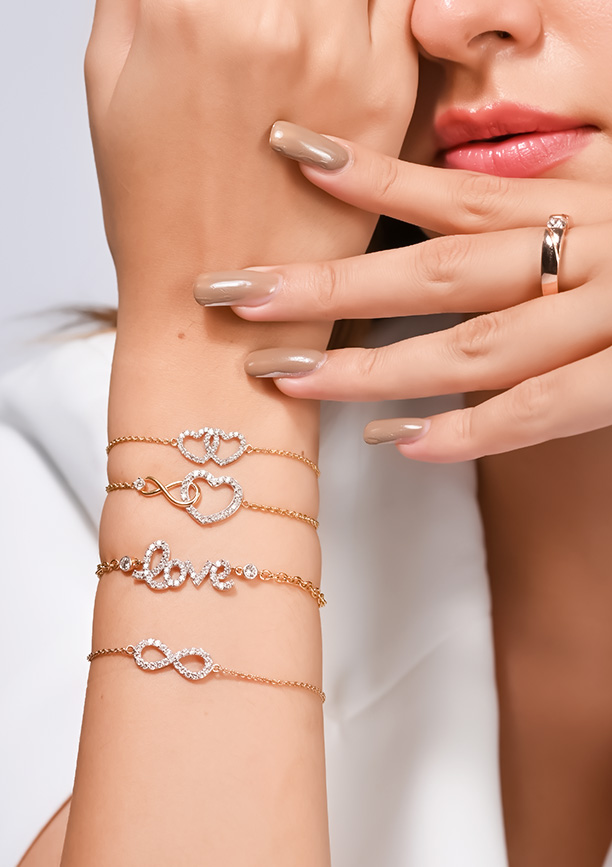The lab-grown diamond jewellery industry is revolutionising diamonds, how they are perceived, and how much they cost. In so many ways, it is making a significant impact across the globe. ‘By 2030, the global market volume of lab-grown diamonds is forecast to be nearly 19.2 million carats’ (Source: Gem Atlas). They will continue to reign after gaining massive momentum over the past decade.
As well as being much friendlier to the pocket, lab-grown diamonds have a host of other benefits, including being cruelty-free, environmentally friendly, and more sustainable.
Diamond jewellery made from lab-grown diamonds is also becoming increasingly popular with celebrities and youth across the globe. Let’s delve deeper and explore some of the reasons they are making waves worldwide.
Sustainability
Sustainability is the need of the hour for our planet. The rate at which we’re going currently may not leave a lot for future generations. Practising sustainability in all areas of our lives will help us become more mindful of our practices. This is where the sustainable and environmentally friendly lab-grown diamond comes into play.
Unlike a natural diamond, a lab-grown diamond is grown in a laboratory. However, In terms of their optical and chemical properties, lab-grown diamonds are 100% identical to natural diamonds.
Diamond mining severely hurts the environment and irreversibly damages the land around the mines. It also pollutes the waterways and causes soil erosion and deforestation. This results in the entire ecosystem getting damaged around the mines including adversely affecting the people who reside in those areas.
On average, for every one carat that is mined from the ground, up to 250 tons of earth are removed, 127 gallons of fresh water are used, billions of gallons of water are contaminated with acid mine runoff, 143 pounds of air pollution are emitted, and countless gallons of fossil fuels are consumed (Source: BRIDES)
Considering these figures, we can see how damaging diamond mining is. It is no surprise that more people are now turning to lab-grown diamonds. There is an increasing trend among millennials to turn to lab-grown diamonds for the endless benefits they offer, not just for their pockets, but for the environment as well.
Affordability
The cost of a lab-grown diamond can be nearly 50% less than a natural diamond! It is simply too hard to ignore the appeal of lab-grown diamonds with their hefty price differences and growing popularity.
A natural diamond forms under the surface of the earth over billions of years, whereas a lab-grown diamond can be prepared in a few weeks. Natural and lab-grown diamond differ significantly in price because of this.
Laboratory-grown diamonds have the same chemical, physical, and optical properties as natural diamonds, making them comparable to natural diamonds but more affordable.
As a result, lab-grown diamonds offer exceptional value compared to natural diamonds. With their countless benefits and large price difference, lab-grown diamonds are becoming more popular.
Cruelty-Free
There is a lot of criticism directed at the diamond industry for the way it treats its workers and miners. There have been complaints about their treatment of children in the trade and the conditions in which they work.
As a result of their work, miners are exposed to a variety of hazardous materials, such as oil fumes and machine components.
A million diamond diggers in Africa earn less than a dollar a day, causing widespread poverty and community suffering. Artisanal miners work in highly unsafe conditions, often without training, safety equipment, or proper tools. (Source: Brilliant Earth)
Violence has also been reported at these mining facilities. We need to end these practices and recognise the true cost of wearing a natural diamond.
It is time to switch to lab-grown diamonds, which are grown in laboratories under the supervision of technicians. By doing so, we can prevent cruel natural diamonds from being produced.
Properties of a Lab-grown Diamond
Nitrogen is ubiquitous in both natural and laboratory-grown diamonds, but the number and nature of the nitrogen-containing defects can have a profound effect on the diamond material and its properties. ( Source: PubMed)
Natural diamonds trap nitrogen throughout their formation. Consequently, nitrogen can cause defects in diamonds or cause diamonds to lack a shining clarity.
This can also affect the colour of the diamond. However, the same issue is not prevalent with a lab-grown diamond thus making it a much clearer and sparkling diamond.
A lab-grown coloured diamond’s price is significantly lesser since it is created in a lab. You can easily customise the colour, size and shape to suit your preferences as there are various options available.
Conclusion
With all the benefits lab-grown diamonds offer, shouldn’t they be the obvious choice? There are so many benefits to be gained from lab-grown diamond jewellery, not just in terms of price but also for the entire diamond ecosystem as a whole.
By embracing the future now, we can also play a part in this change. At Jewelbox, we believe diamonds are for everyone. Discover the world of lab-grown diamond jewellery with us today.








